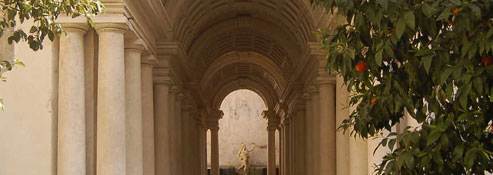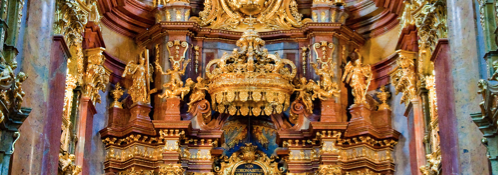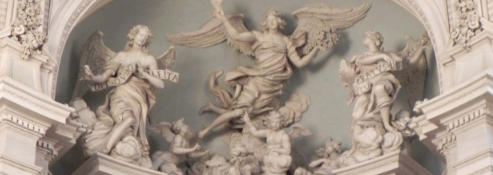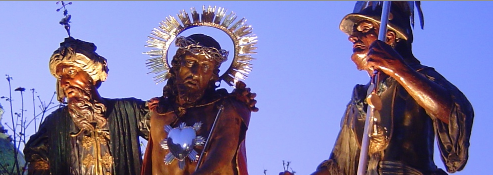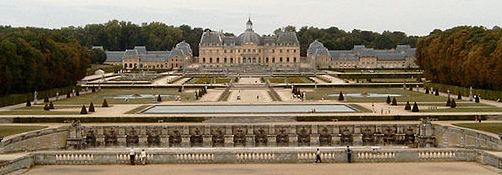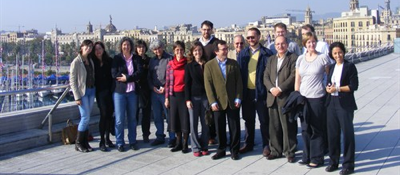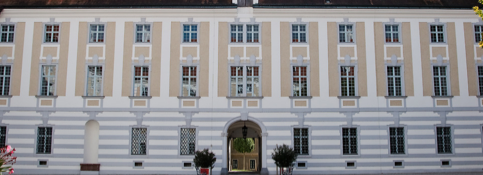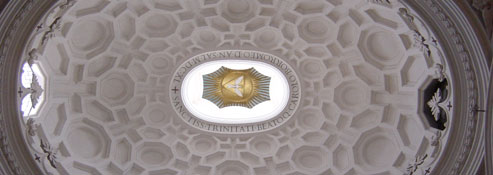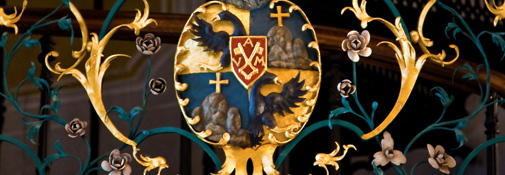The development of building and architecture in the Northern Countryside, especially in the Southern and Eastern Baltic Area, depended to a large extent on the development of the rural economy in the early modern period.
1. Economic History
The economic history in the Southern and Eastern Baltic Area was largely dominated by the emergence of the manorial economy (Gutswirtschaft). This can be divided into three periods:
1. Formation and expansion during the 15th and 16th centuries: Demographic losses and desertions of lands, characteristic of late-medieval Europe in general, led to declines in the income of late-medieval landowners, with the shrinking number of peasants and their feudal rents. To compensate for these losses, demesnes and noblemen in East-Elbia were taking deserted village lands (Wüstungen) into direct cultivation by the 15th century, establishing demesne farms (Vorwerke, Höfe). In the 16th century noble demesne farming on princely and noble estates expanded, stimulated by rising prices for agrarian products. With this expansion rose the obligations of corvée labour for the peasants, which provided the labour supply for expanding agrarian production. To maintain this cheap labour supply, the landed aristocracy enforced hereditary enserfment (Leibeigenschaft) in Holstein, as early as the second half of the 16th century, and in Schleswig during the 17th century. Peasants (except the free peasants of Schleswig-Holstein's North Sea coast) were no longer allowed to leave their holdings without the lord's permission.
The formation process of demesne farms took different forms, whereby two processes coincided: the repopulation of the estates and the expansion of demesne farming. Before the end of the 16th century, the ducal demesnes and noble manors that had been depopulated, succeeded in repopulating their lands. Moreover, from the second half of the 16th century we observe a steady increase in the manorial arable acreage. This increase took place on deserted village lands (Wüstungen) and at the expense of common pasture lands. Sometimes the village mayor (Schulze), who had traditionally enjoyed a large holding, was bought out. It has been always contended in the older literature that a large part of the peasantry had been expelled from the land and that their lands were used to build up demesne farms. [1] This, however, was normally not the case, since the demesnes needed every labour service of the peasants and especially the peasants' ox-teams or horse-teams during this formation period of the manorial economy. In the 17th and 18th centuries, however, we witness this so-called Bauernlegen to a greater extent in Mecklenburg but also in Pomerania.
The Development of the Swedish Empire in Early Modern Europe (1560-1815)

The depression period in the 17th and early 18th centuries. [2] During this period, characterized by a stagnation of the long-term grain price trend, the landowners adopted different crisis strategies. Royal and ducal demesnes reduced their arable acreage and thus the quantity of corvée obligations, instead extracting the feudal rent directly in the form of money, in order to avoid risks in grain producing and marketing by shifting that risk on to the peasants' shoulders. Furthermore specialization in dairy-farming helped to overcome the crisis in the early 18th century. The noble manors, on the contrary, tried to counteract the crisis by reducing production costs and increasing their market share. Thus they increased the corvée obligations of their peasants and expanded their production, thereby aggravating the crisis. They often combined the expansion of grain production with investments in dairy-farming. [3] Therefore, noble manors increased the corvée obligations of their. For example they increased corvée obligations to a daily corvée with two horseteams (8 horses, 5 men) in Schleswig-Holstein and to 4-6 days a week in Swedish Pomerania. Peasants hat to hire extra wage labourers to fulfill their corvée obligations. [4]
2. The reform period in the 18th century: Rising prices for grain, a growing rural labour supply on the one hand, and increasing resistance of the peasants and rising maintenance costs of the manorial economy on the other, stimulated reform and modernization of agriculture. As royal administration, lease-holders and noble landowners became aware that a manorial economy based on corvée labour was no longer profitable; they switched to money rent, subdividing the Vorwerke and letting these holdings to the peasants, while they worked the remaining demesnes with wage labour. Since the 1760s, demesnes (Vorwerke) were dissolved and separated from the acreage of the village communities. Subdividing the Vorwerke and letting these holdings to the peasants, the demesne administrations worked the remaining land with wage labour.
This overall model of course needs to consider regional variations of development which do not fit. Especially in the last decades the various regional developments of manorial economy with respect to markets, labour and land have been in the centre of research. Nevertheless, a general model could help to explain the major development of the manor house architecture in the Baltic Sea Region. Here we witness an emergence of Renaissance manor houses in the second half of the 16th century, a development which lasted into the early 17th century as well.
2. Manor Houses
Crisis and depression in the 17th century would suggest that only a few manor houses in the Baltic Area were built in this area. This is confirmed by small numbers of new manor houses at least in the Southern and Eastern Baltic Area. In the 18th century economic upswing, raising grain prices and the establishment of new manor houses seem to coincide again. We can witness a new building boom in the 18th century, especially in the second half. However, it was not only the income from manorial economy, which enabled and inspired the investment into manorial architecture. Military and administrative service in the Danish or Swedish realm led to noble migration from Schleswig, Holstein, Mecklenburg, Pomerania, Livonia and Estonia to Denmark, Sweden (and later Russia) and further to positions in the administration of the Danish, especially the Swedish, and the Russian Empire. At the same time architects took services and migrated from one country to another (or from one Swedish province to another).
These noble and artistic migrations could sometimes counteract the economic developments, as office holders and officers were able to gain an extra income from their offices and had not to rely on the agricultural production of their manors alone.
3. Noble Migration
One of the numerous examples of noble migration in the Swedish Empire is the von Fersen family, which had been present in Estonia from the 16th century and entered Swedish services in the 17th century. In 1674 the family was introduced as barons (friherre) and in 1719 as count (greve) into the House of Nobility (Riddarhuset). In the middle of the 18th century the introduction into the Estonian and Livonian knighthood followed. The most important member of the family Fabian von Fersen (1626-1677) climbed up the military carrier, which led him to offices such as the commander of Stralsund, the governor of Livonia and Riga and finally the Governor General of the Scanian lands, which included the provinces of Skåne, Halland and Blekinge in 1676. Fabian von Fersen cultural activities/legacy is still present in Maardu Manor in Estonia.
Portrait of Swedish Field Marshal Fabian von Fersen (1626-1677)

This Palladian building was designed by Jacob Stael von Holstein - one of the most prominent architects of the 17th century - and reflects the "Dutch" Palladian style, which is not only visible in Stockholm, but also in the Palace of Axel von Rosen in Reval, also designed by Jacob Stael von Holstein.
Herrenhaus Maardu (Udiküll), designed by Jacob Stael von Holstein

From the Mecklenburg and Pomeranian perspective especially interesting is the North-South migration across the Baltic Sea during the Swedish rule. From the beginning Sweden granted fiefs to her officers and administrators. Already in 1643 as a comparison for this credits to the Swedish government Gerdt Antoniison Keffenbrinck (1610-1658) received the former ducal Amt of Grimmen from Queen Christiana. Keffenbrinck, who was ennobled as Rehnskiöld, and his son Carl Gustav Rehnskiöld (1651-1722) set up Griebenow as a baroque manor complex.
Griebenow

Ground Plan of Griebenow, 1849

The beginning was a unique round chapel, Carl Gustav commissions did not only include a new manor house, but also a gate house (Torhaus), stables, granaries and a baroque garden. The architect must have been in close contact with Nicodemus Tessin the Younger (1654-1728), since the sight reflects very much the manor house of Sturefors in Östergötland, which was designed by Tessin (characteristic avant-corps middle Risalit, which juts out from the corps de logis).
4. Migration of Architects
Not only noble migration had an impact on the architecture and the material culture of manor houses. Migration of architects played a significant role in the Swedish realm as well. Fortification specialists and military architects were sent to different places and sometimes developed a special style with respect to fortification and building. The most prominent example is Nicodemus Tessin the Older, who started his carrier in the fortress of Stralsund and moved then to Sweden. The architectural exchange worked however also vice versa. One example is Rudolph Matthias Dallin (1680-1743), who was a Swedish Capitain des Mineurs (fortification ingenieur) and active in Holstein-Gottorp (the closest Swedish ally) during and after the Great Northern War. At the beginning he played an important role in fortifying and redesigning the port city of Tönning. From 1716 he became the court architect at Eutin, where he overlooked the reconstruction of Eutin castle (the seat of the Prince-Bishopric of Lübeck). Dallin's activities, however, were not confined to the ducal and episcopal courts. Dallin became influential in the design of manor houses as well as manorial sites and gardens. Manor houses, gate houses and granaries became his specialty. One of this first commissions was the manor of Rastorf (Christian Emil zu Rantzau). A number of manors and gate houses followed: the Manor Seegalenhof, Manor Perdöl, and Manor Lammershagen.
Manor Rastorf (Schleswig-Holstein)

His late baroque style was also applied in his famous design of manor houses, for example the manor houses of Güldenstein and Johannstorf. Both facades show the avant-corps (middle Risalit), characteristic also for Dallins' architecture. With Johannstorf, his major oeuvre of the 1740s Dallin expanded to Mecklenburg, where the Buchwaldt family had their residence. Dallin planned and design the site, which only partly exists due to the legacy of GDR. Nevertheless, Dallins' mastership, the dominant avant-corps is still visible. Due to Dallins' work in Holstein the gate house (Torhaus), a building type hitherto uncommon in Mecklenburg, became fashionable there and spread out further east (Dalwitz, Bellin, Dreilützow, Remplin and Luplow). This aspect deserves of course further investigation. For example, the question has to be solved how special building types such as the Torhaus spread in the Baltic Sea Region. Do we have Torhauses in Jutland or in Sweden?
Another aspect are gardens (baroque gardens), which were in the 17th and 18th centuries closely linked to the design of a manor, but in a close contact with economies as well. They are however often neglected by research. Architectural plans reflect the layout, but inventories would shed different light on the gardens as they were constructed and as they existed.
As regards the large scale development of baroque art and architecture, we have to look at the numerous churches that underwent a baroque restoration during the 18th century when the financial means of thee parishes and church patrons were restored after the Great Nordic War. Especially in the country side numerous medieval churches were redesigned in a baroque manor and local workshops specialized in the design and production of baroque altars, pulpits etc. This development has been overlooked for long and needs further comparative investigation.
Notes
[1] For an overview see M. North, Geschichte der Ostsee, München 2011.
[2] For Schleswig-Holstein see: C. Porskrog Rasmussen, Forms of Serfdom and Bondage in the Danish Monarchy (forthcoming).
[3] C. Porskrog Rasmussen, ‹‹Innovative Feudalism. The Development of Dairy Farming and Koppelwirtschaft on Manors in Schleswig-Holstein in the Seventeenth and Eighteenth Centuries››, in Agricultural History Review, 58, 2 (2010), pp. 172-190.
[4] R. Schilling, Schwedisch-Pommern um 1700, Weimar 1989, p. 45.



